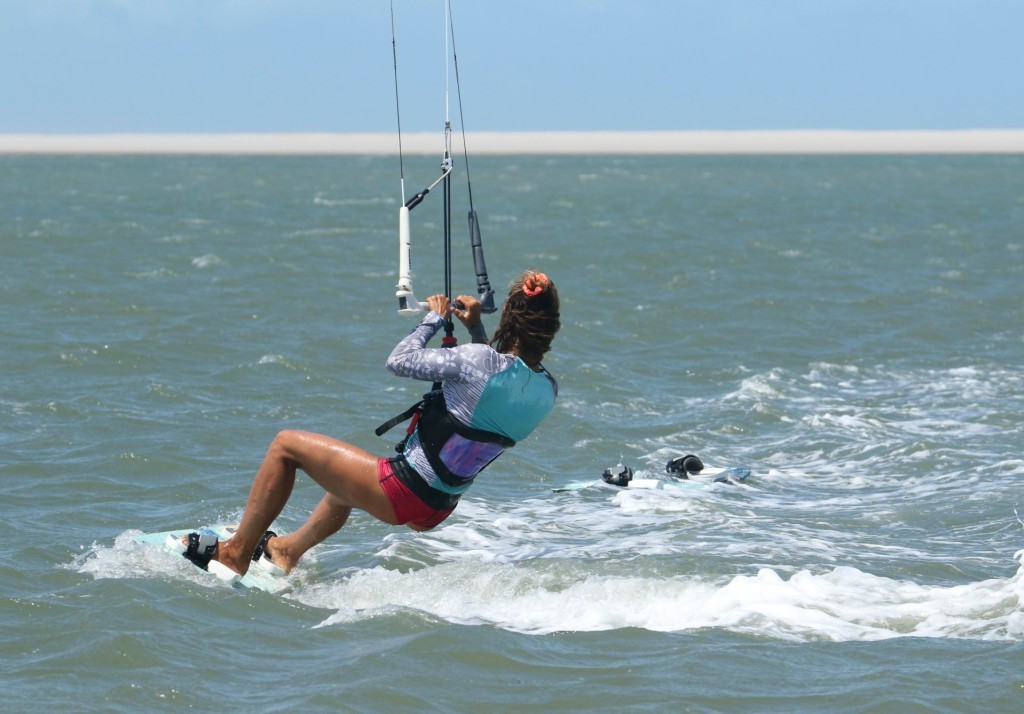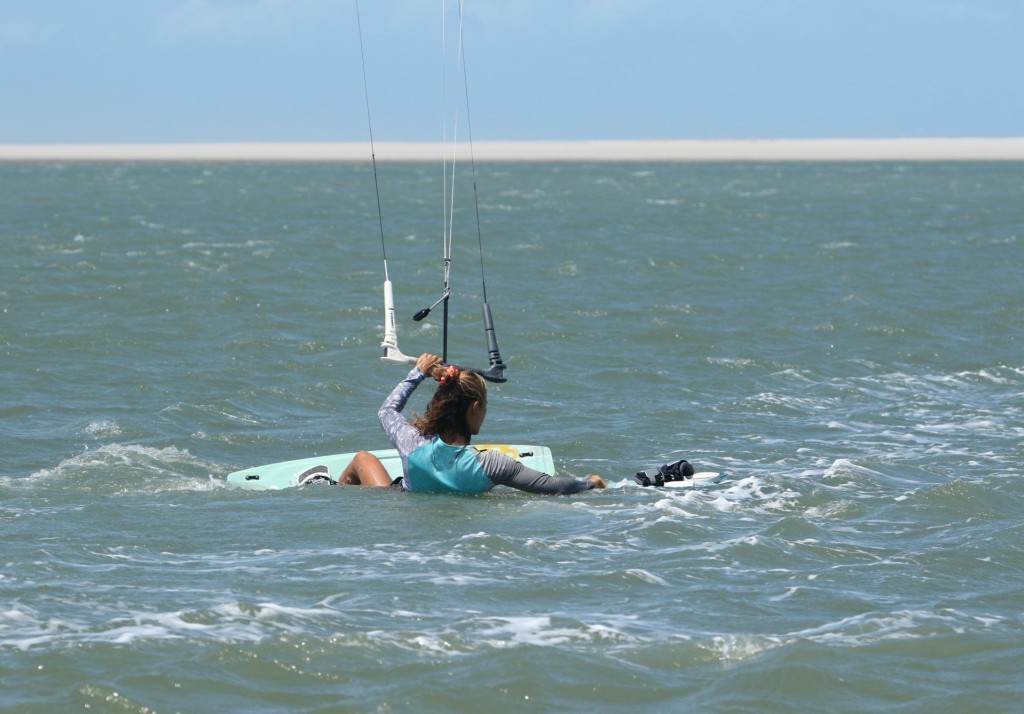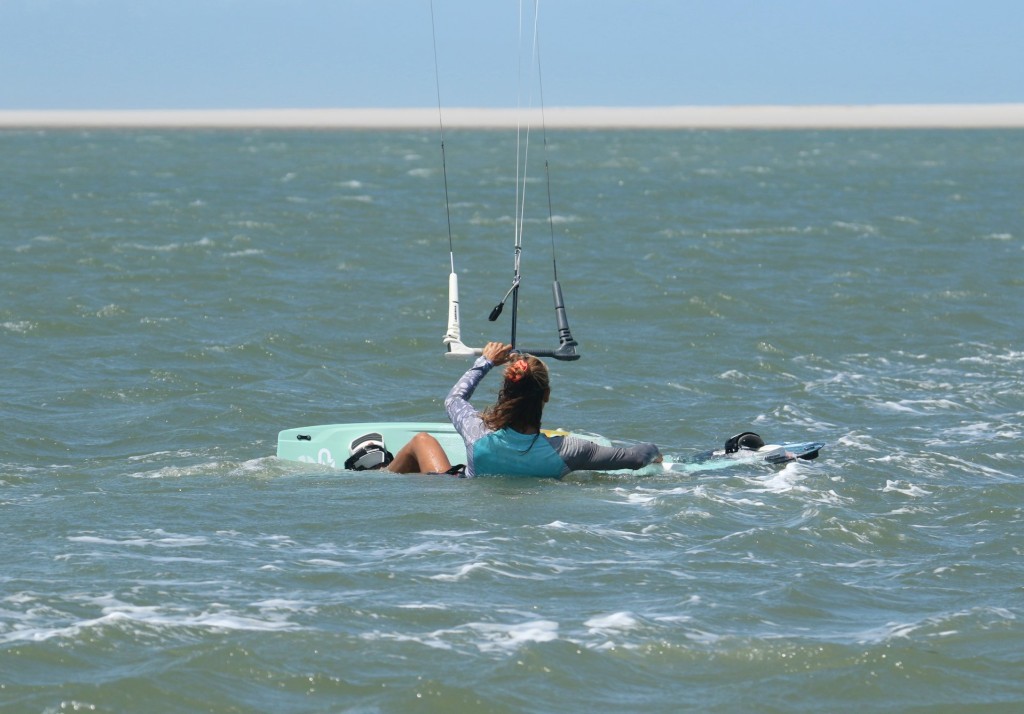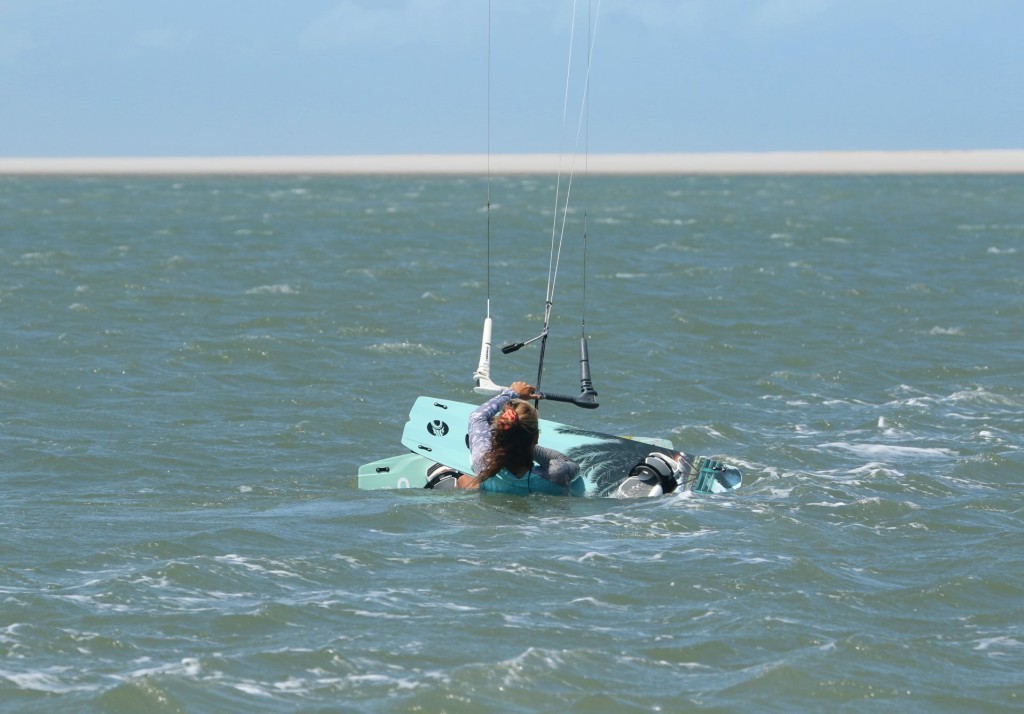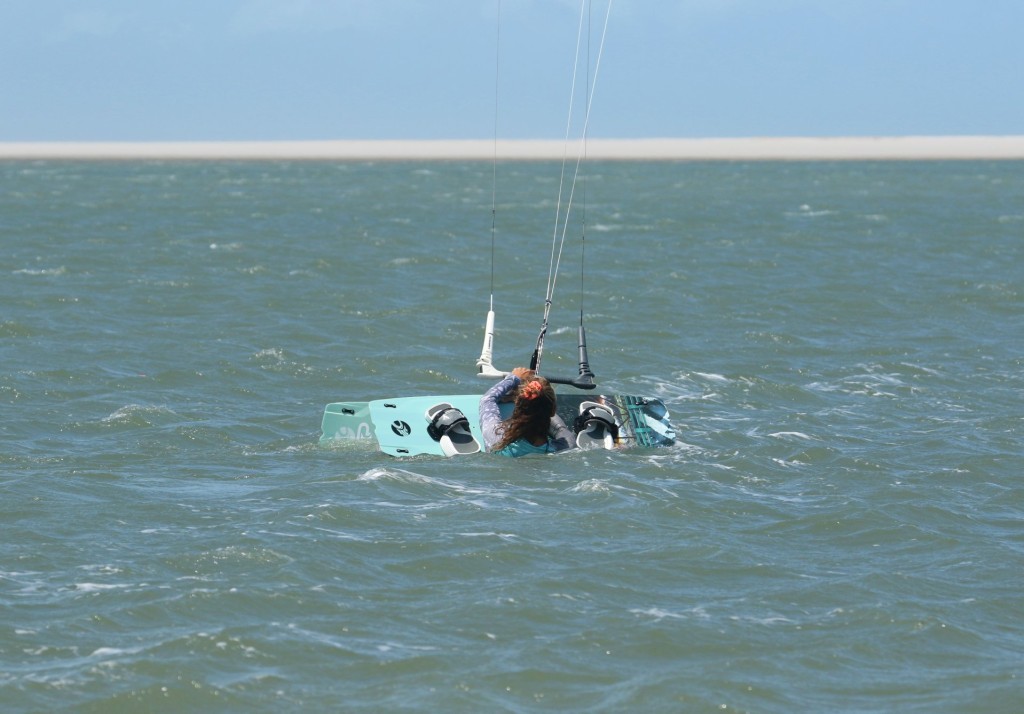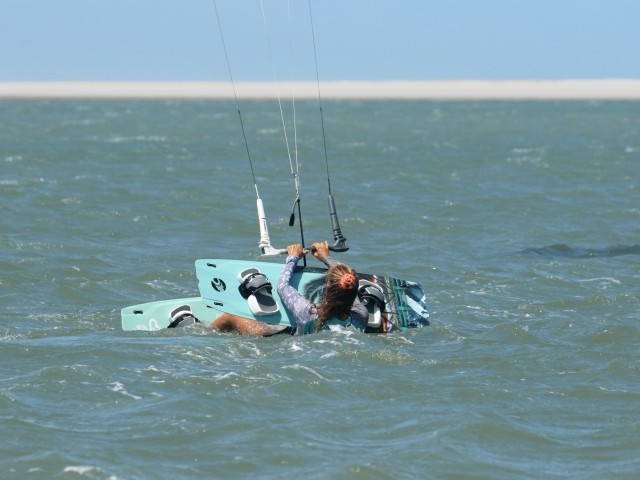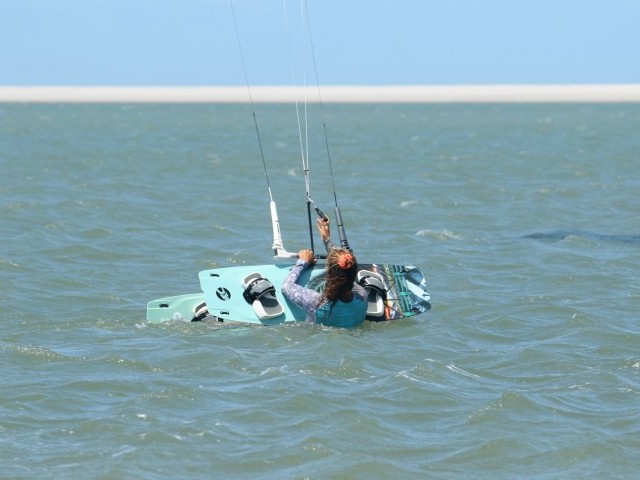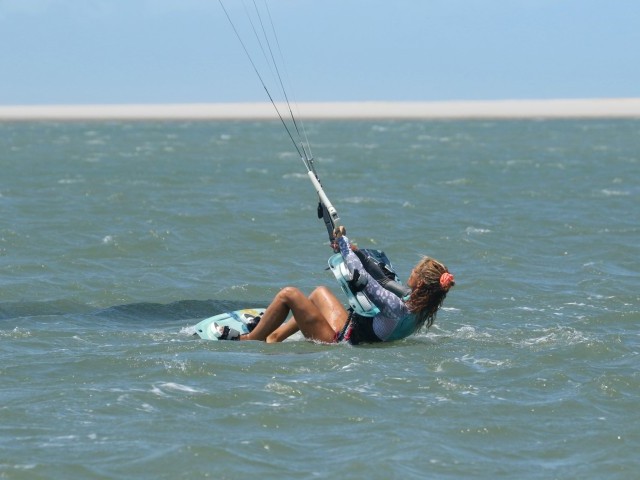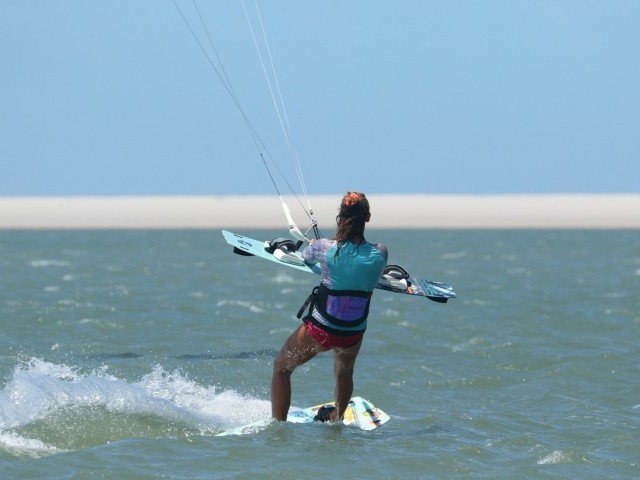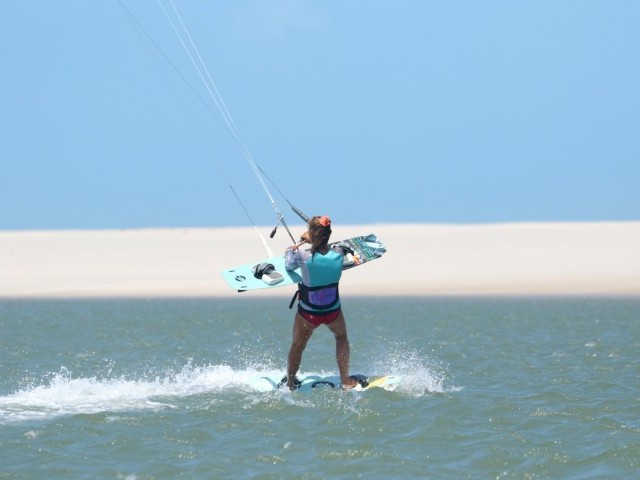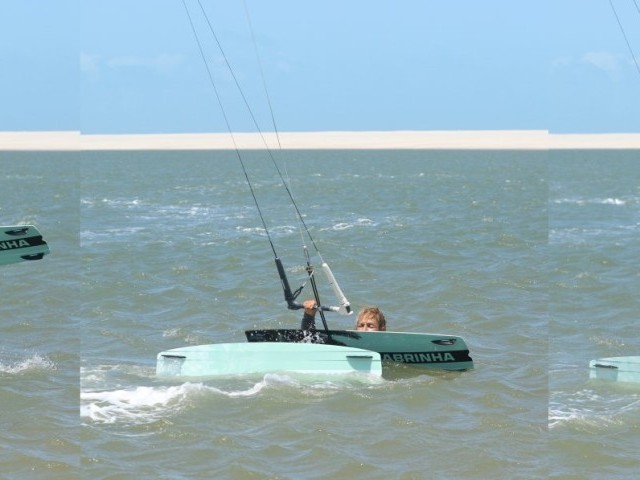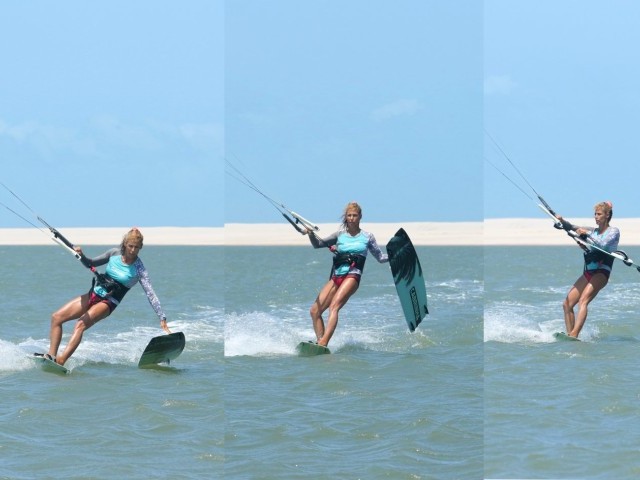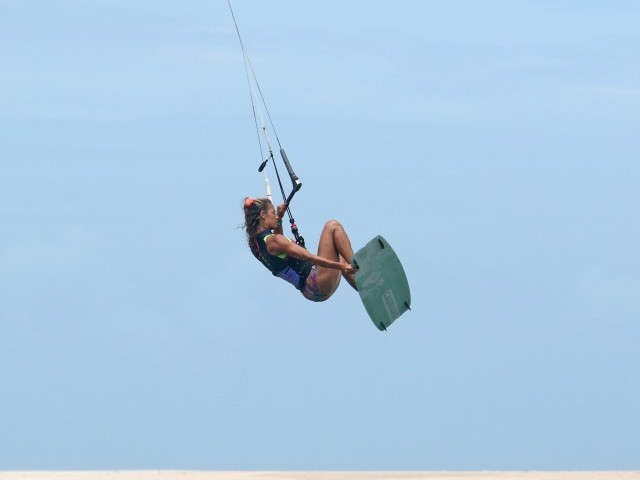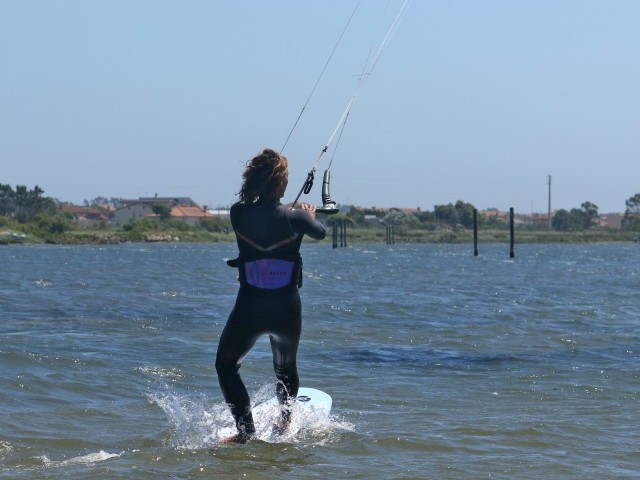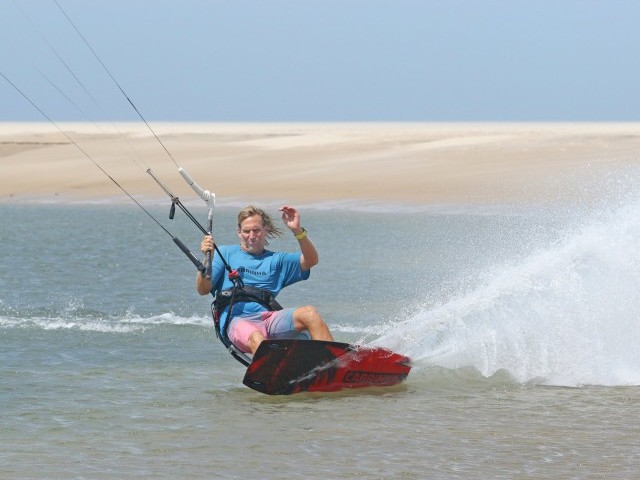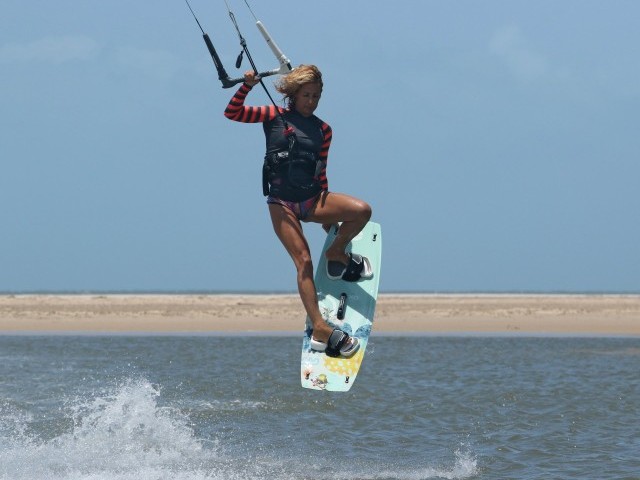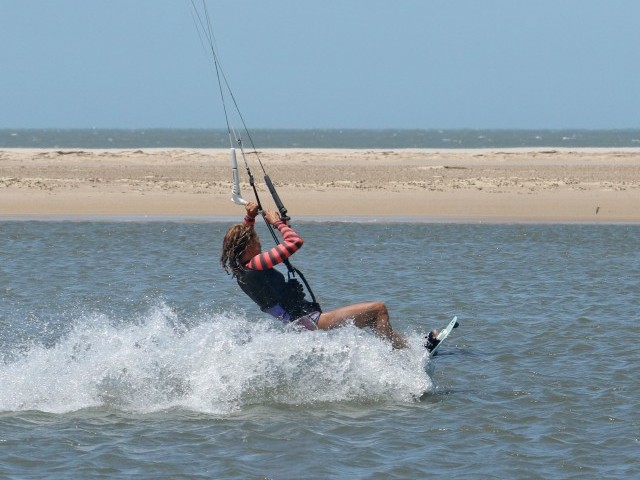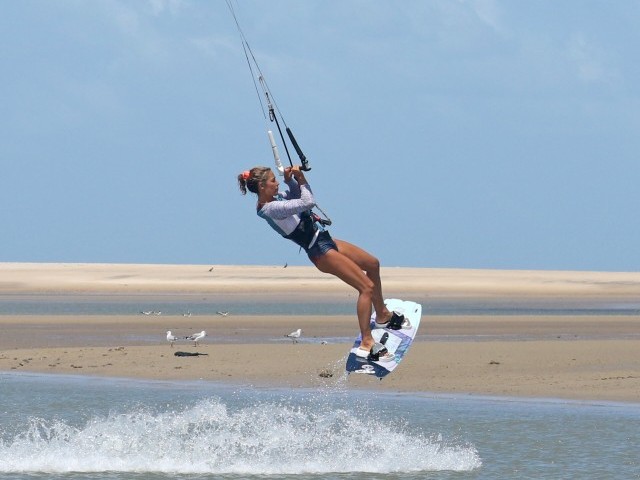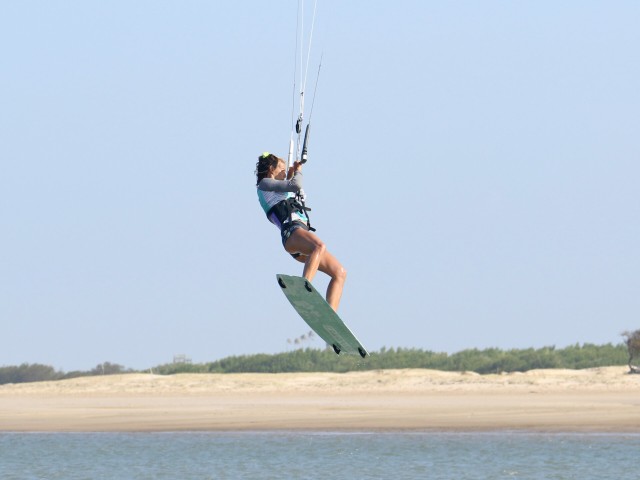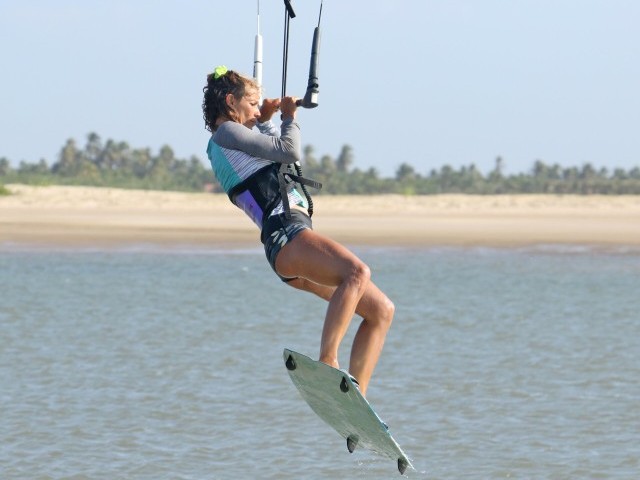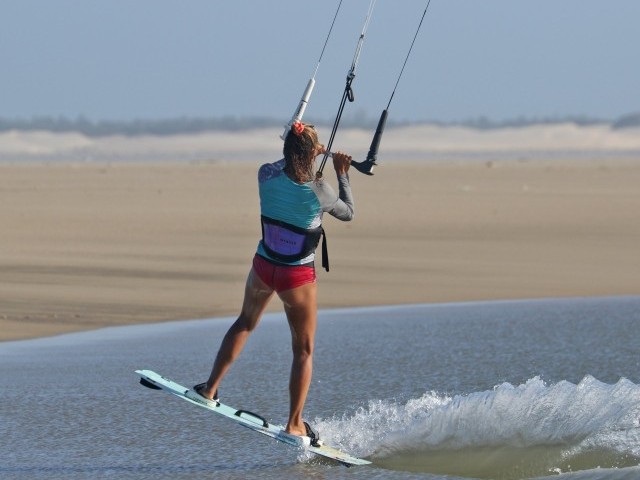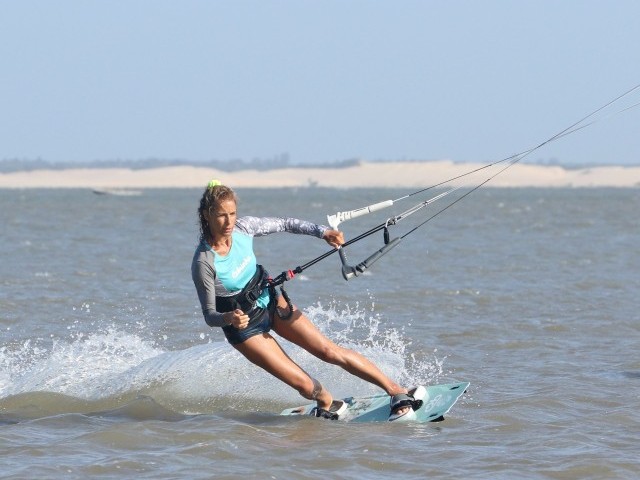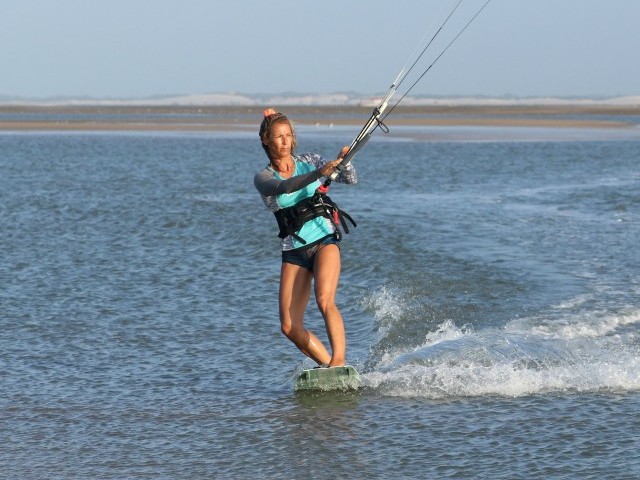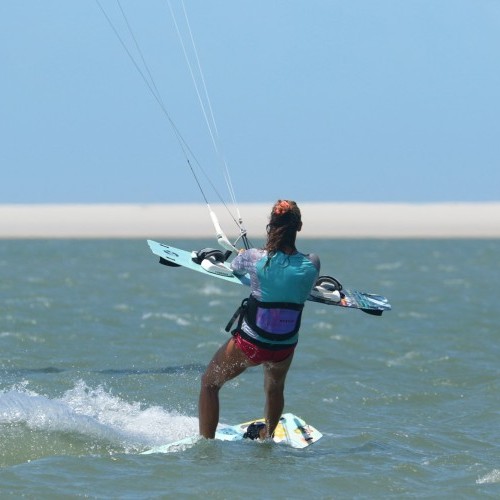
Board Rescue – How to Carry a Board
Technique / Beginner
We've all been there. You spot a fellow kiter body dragging far downwind of their board, which just so happens to be near you. You go to do your good neighbourly deed, and then it all goes Pete Tong. You manage to pick up the board, but you can't ride, or at worst, you start riding and then crash your kite or drop the board on your feet; ouch! In the end, you sit low in the water and drift downwind at a snail's pace. Not very effective and not very elegant. So much for making new friends and kiting camaraderie!
There are many different ways to carry a board. Although it's usually a doddle for the more experienced kiter, there is an easy, tried and tested method that'll help you carry a board safely and securely, regardless of your experience, the conditions, whether it has a handle or not, upwind or downwind, without you losing a toe, crashing your kite or waiting for Christmas.
What you're aiming for here is to carry the lost board on your centre line, using both forearms to hold it in place. This allows you the freedom to kite as normal without the worry of kiting with just one hand, looping the kite for power, or the board slipping off your knees. We'll have a look from the get-go at how to approach the board, how to get it on, how to ride and how to drop it off.
Approaching Pic 1.
Once you spot a lonely board, first check to see that the owner isn't making good headway back to their board! Sometimes, it's possible to be too willing to help when the rider is already charging upwind with a near-perfect body drag. If they're already close, steer clear, as tangling lines is never appreciated. If the coast is clear, trim your sweet spot out and approach slowly from the side. Stop next to the board ever so slightly upwind.
Sit Pic 2.
Lower yourself into the water and use your kite to pull you towards the board. A kite high will pull you downwind, and a kite to the side will move you in that direction but still downwind. Reach for the board with your front hand and control the kite with your rear hand.
Grab Pic 3.
Grab the board anywhere you can: edge, footstrap or handle. Once you've got a firm grasp, keep your kite to the side and relax pressure on your bar so that the kite pulls less. This will position your bar and centre line lower and make what's to come easier.
Position Pic 4.
Holding either a footstrap or the handle, pull the board as far over the centre line as you can. If you're next to the board, you can raise your elbow and slide it under your arm at the same time. If the board is upwind of you, you'll end up pulling it over the centre line and the arm which is holding the bar and controlling the kite.
Centre Pic 5.
Use either arm to pull the board until the middle is over the centre line. This way, it'll be balanced when you ride. The lower you sink and the lower you position the kite, the easier this will be.
Two Hands Pic 6.
Release the board and put both hands on the bar. Your arms will naturally push the board down onto the centre line; it's secure!
Un-trim Pic 7.
Chances are that you won't have thought of this. If you have already, ignore. In old money, power up. If you've been riding with your sweet spot close to you, you'll want to trim it away from you so that the bar is above the board. This will allow you to ride and steer with tension on your back lines regardless of how wide the board you'll be carrying is.
Time to Go Pic 8.
You can now confidently hold the board in place whilst you water-start. If this is your first time, be gentle. Better too little, and to have to go again rather than get launched with the extra board in front of you!
Riding Pic 9.
With the board held firmly and naturally in place, you can happily ride, work the kite and return the board to its rightful owner, whether they're downwind, back at the beach, or even upwind.
Turning Pic 10.
With the bar trimmed out and the board secure, you can turn and transition as normal. If this seems a tad daunting, you can drop into the water and then start up in the opposite direction.
Deliver 1 Pic 11.
Before dropping the board off, let the body dragger know you have their board. A little shout should do the trick. Kite downwind and to the opposite side to which they have their kite. Slow down and lower yourself into the water before floating their board off your centre line and sailing away.
Deliver 2 Pic 12.
With practice and depending on conditions, handles, size of board, etc., you should be able to lift and slide the board off using your front hand so that you can hold it in front and upwind of you before dropping it in the water. If the board has no handle, use the rear footstrap.
There you have it, a pain-free and effective way to help each other out in times of need. It's always good to spread the love!
This technique article was in Issue 102 of IKSURFMAG.
Related
By Christian and Karine
Christian and Karine have been working together as a coaching team, running improver to advanced kitesurfing clinics since 2003.





